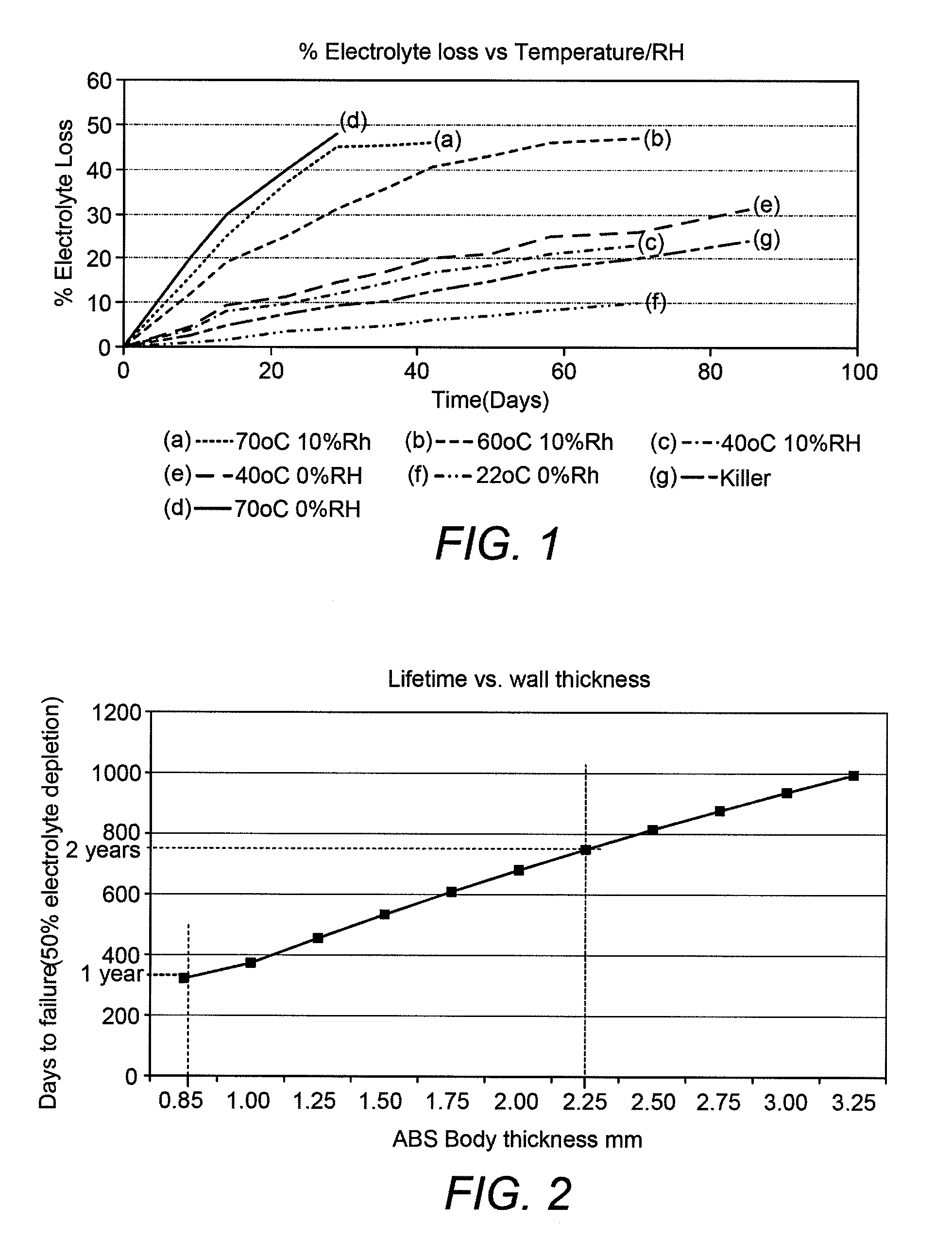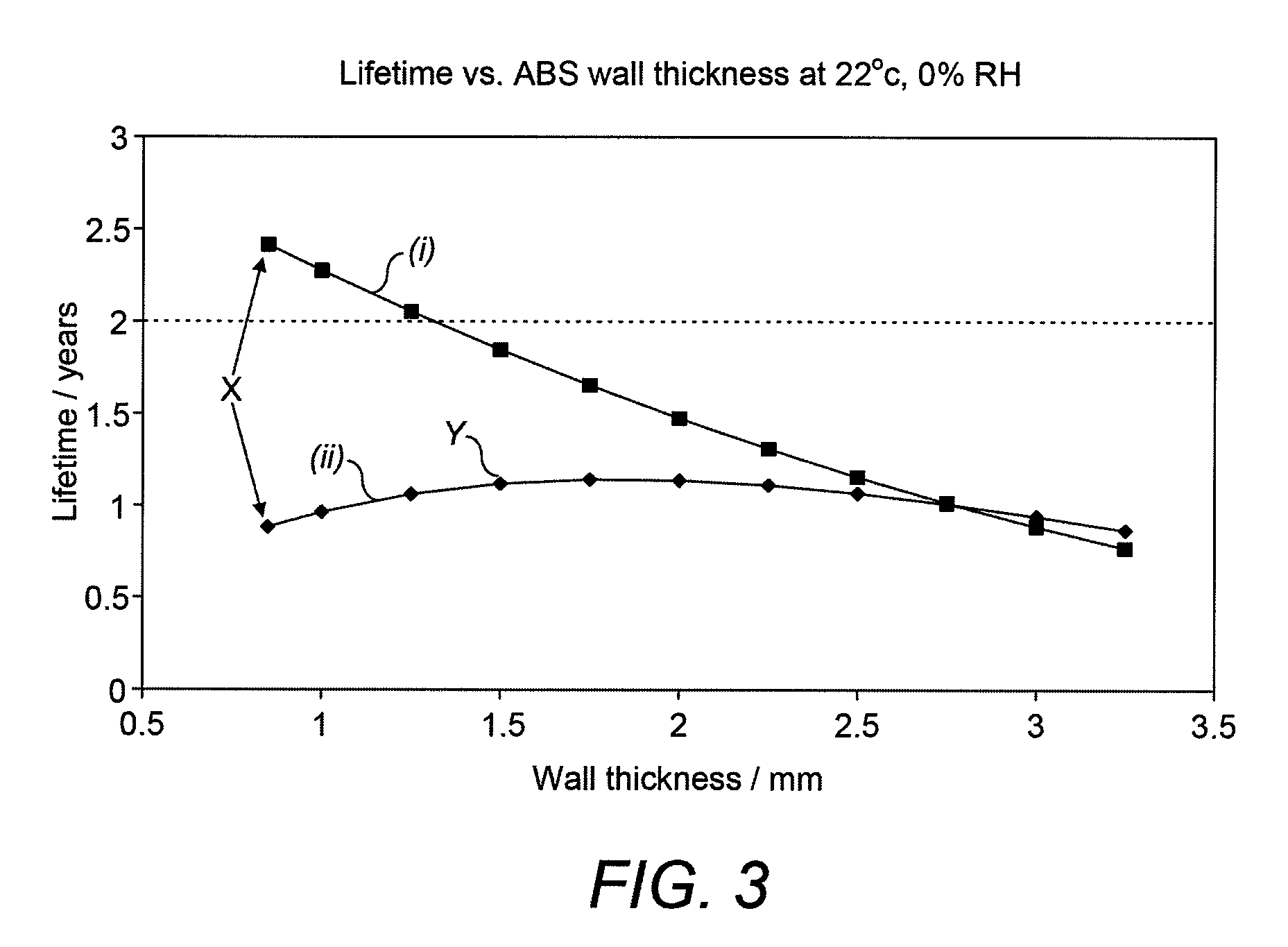Electrochemical gas sensor
a gas sensor and electrochemical technology, applied in the field of electrochemical gas sensors, can solve the problems of limited filter life, drying out of electrolyte, and loss of all types of sensors, and achieve the effects of reducing the life of filters, reducing the efficiency of sensors, and reducing the cost of production
- Summary
- Abstract
- Description
- Claims
- Application Information
AI Technical Summary
Problems solved by technology
Method used
Image
Examples
Embodiment Construction
[0018]In accordance with the present invention, an electrochemical gas sensor for the detection of a target gas in an atmosphere comprises a gas sensing electrode and a counter electrode disposed within a housing, and means for connecting the gas sensing electrode and the counter electrode to a sensing circuit, the housing being provided with an aperture for gas ingress and comprising walls defining a cavity containing, in use, electrolyte in fluid communication with the gas sensing electrode and counter electrode, wherein at least a portion of the walls defining the cavity comprise a first layer integral to the housing and a second layer thereon having a lower water vapour transport rate than that of the first layer, such that in use water vapour transport from the electrolyte to the atmosphere through the walls of the housing is reduced.
[0019]By providing the housing walls with a layer or coating of a material with a relatively low water transport rate, it becomes possible to redu...
PUM
| Property | Measurement | Unit |
|---|---|---|
| thickness | aaaaa | aaaaa |
| thickness | aaaaa | aaaaa |
| thickness | aaaaa | aaaaa |
Abstract
Description
Claims
Application Information
 Login to View More
Login to View More - R&D
- Intellectual Property
- Life Sciences
- Materials
- Tech Scout
- Unparalleled Data Quality
- Higher Quality Content
- 60% Fewer Hallucinations
Browse by: Latest US Patents, China's latest patents, Technical Efficacy Thesaurus, Application Domain, Technology Topic, Popular Technical Reports.
© 2025 PatSnap. All rights reserved.Legal|Privacy policy|Modern Slavery Act Transparency Statement|Sitemap|About US| Contact US: help@patsnap.com



